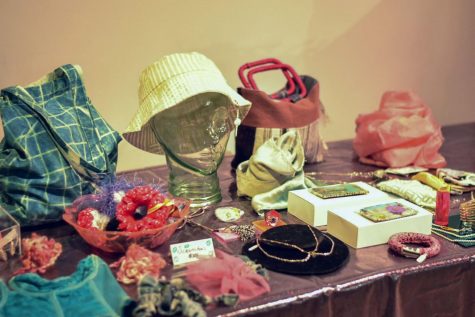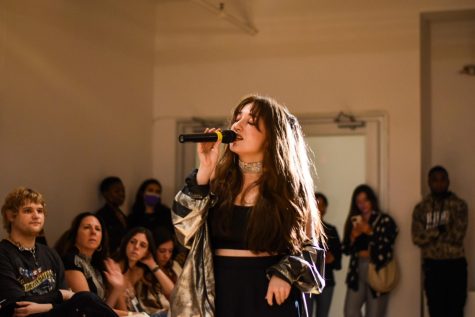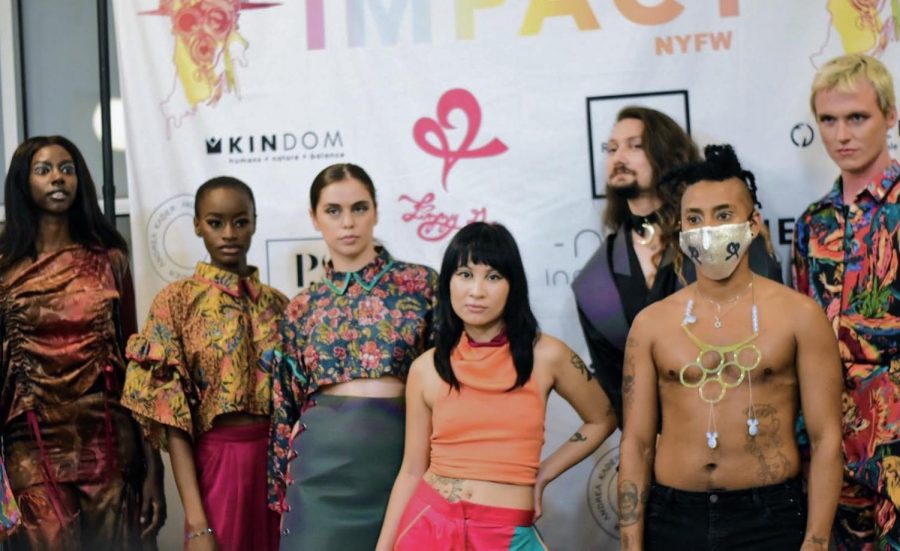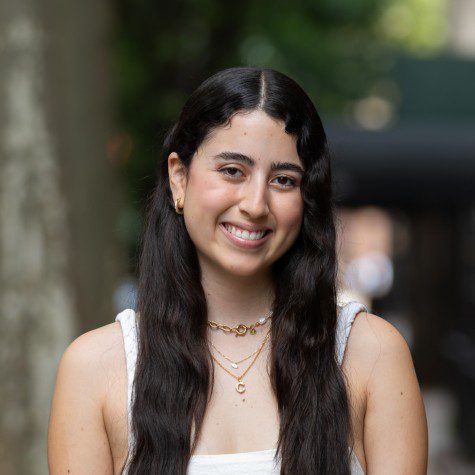The sustainable fashion dream exists — it’s called IMPACT NYFW
IMPACT is setting the standard for a new era of greener fashion.
IMPACT, a nonprofit founded by Brooklyn-based designer Lizzy Gee, focuses on sustainable fashion. At New York Fashion Week, IMPACT gave a platform to designers and brands that create sustainably. (Photo by Camila Ceballos)
October 26, 2021
Coming to New York City meant that I could finally live out my Carrie Bradshaw dreams and attend a fashion show. However, my “Sex and the City” fantasy only seemed possible at the environment’s expense. New York Fashion Week is a huge event, but its shows hardly take sustainability into account, or so I thought — until I found IMPACT NYFW.
IMPACT is a nonprofit NYFW platform for sustainable designers and fashion created by Brooklyn-based designer Lizzy Gee in 2019. I had the pleasure of attending its third show on Oct. 16. A series of pop-up booths showcased designers’ work, ranging from handbags and accessories to jeans and dresses.

Notable designers included Logan bLagg, who brings abstraction into fashion by making designs with cutouts and thrifted fabrics. The brand’s pieces are sure to make people on the street compliment your daring style. Blagg is also the creator of Brooklyn-based shop Lagoon, curated with Amalya Meira.
“We use a lot of upcycled textiles that are either upholstery or houseware adjacents — so like fun 1960s napkins — and also upcycling vintage garments from thrift stores like old silks that don’t make sense,” Meira said.
Meira’s designs include many dresses with colorful, bold prints that combine thrifted fabrics to give them new life. The designs and shapes of Meira’s garments make her pieces different from any ordinary shirt, vest or dress. The epitome of Meira’s wearable art is the “Netta Vest” — a crochet vest over a dress. The dress is still visible because the vest is see-through. Layering without the bulk? Count me in.
The show was also attended by Puerto Rican jewelry designer Sabrina Margot Valldejuly. If you want to wear beautiful earrings without the pain of a cartilage piercing, Margot Valldejuly’s cuffs are perfect.
Meanwhile, Parsons School of Design graduate and Costa Rican designer Andrea Kader, creates patchwork jeans that distinguish themselves from the ones in your Pinterest feed.

“We try to be as zero-waste as possible, so that’s why we have the scrunchies and the microbags,” Kader said. “Throughout the design process we also source local goods, work with people, buy secondhand, and we don’t have to wash the denim 10 times, but only wash it once and it already has that nice feel.”
Many brands don’t care about the fabric left over after production, so it’s admirable how Kader creatively uses textile waste to her advantage. Denim can be a difficult material to upcycle, as you risk making a garment that looks like a kid’s collage.
On the other side of the room was Harlem-based designer Keäma Garrett, owner of clothing brand KEÄMA. I was fangirling as I approached Keäma — Beyoncé wore his designs in her visual album Black is King.
“A lot of my fabrics, I make sure that there’s an eco component in it — so like recyclable materials, as well as I work with FABSCRAP,” Garrett said. “There’s so much textile waste, so volunteering with them, the community sorting, and using those to make one-of-a-kind specialty pieces is great.”
By working with FABSCRAP, an organization that helps brands recycle textiles, Garrett’s designs shine in sustainability, not just style.

The pop-up event was followed by the fashion show, hosted by the cheerful and stunning Bianca Golden, a former “America’s Next Top Model” contestant. The standout brands were Innata and Lizzy Gee, the latter of which used impressive color palettes and eco-friendly materials like citrus-waste satin and organic cotton. The show included musical numbers performed by Amaya Santos and DANIA, as well as speeches from Shannon Welch, a strategic director at Fashion Revolution USA, and Erin Weins, reuse coordinator at FABSCRAP.

Every designer and attendee I spoke with at IMPACT agreed that sustainability can start small, but also that it requires consistent effort. We can begin this work by supporting growing fashion businesses that emphasize sustainability. IMPACT aids this work by helping consumers like me learn about sustainability while also providing a platform for amazing sustainable designers.
Contact Camila Ceballos at [email protected].


























































































































































